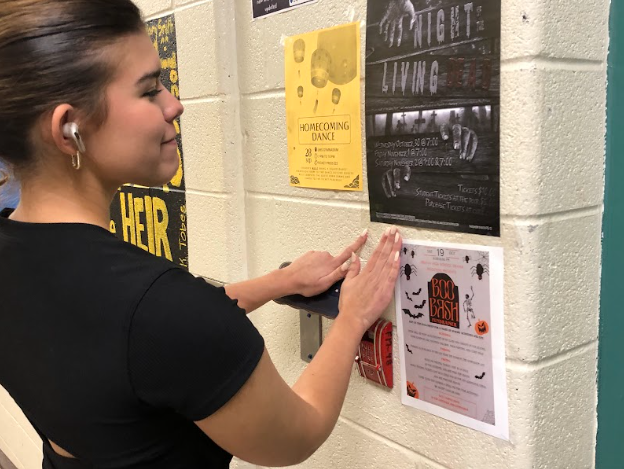Standing for the Pledge in School: Why Do We Do it?
February 21, 2023
It’s 9:05 in the morning when the bell rings for the start of second block. Everyone is sitting in their seats. The teacher starts to play the announcements when the pledge of allegiance comes on. No one makes a sound. The awkward silence creeps up as the assistant principal recites the pledge. Everyone remains seated. But why?
“I pledge allegiance to the flag of the United States of America and to the Republic for which it stands, one nation under God, indivisible, with liberty and justice for all.” Words students and teachers have recited everyday in school since October of 1892.
Recently, though, the reciting of the pledge of allegiance has significantly gone down in schools among students and teachers. Some people believe that reciting it is not patriotic and that there is no point in standing for the flag. Others believe that it is a sign of respect or a daily routine. Students have been reciting the pledge because they’ve been doing it since they were little. Some people don’t even know why they do it, they just follow the group.
“It’s just something we grew up with and are expected to do,” said sophomore Anna Rodriguez.
Having schools stand for the pledge may not be controversial now, but it was back in 1943. According to CNN, “the Supreme Court ruled in the case of West Virginia State Board of Education v. Barnette that students couldn’t be forced to salute the US flag or say the pledge because doing so would violate their First Amendment rights.”
Although students and teachers are not required to stand anymore, people agree that standing for the pledge in school is a sign of respect to our country. World Language teacher, Madam Kacko, said that “if it is something that was from the early beginning of this country, it’s something people should do. Every country has their civic rules and it’s something that is important for this country.”
The word allegiance means loyalty or commitment of a subordinate to a superior or of an individual to a group or cause. Like Kacko said, every country has a way of showing respect to their flag. Saying the pledge of allegiance to our flag is how we show our loyalty and respect to our country. It’s the fact that some people don’t know why we stand that’s the problem. “I don’t know why I stand. I think it has a lot to do with religion, but I don’t know why we do it in school,” said sophomore Andrew Mcdonald.
Some teachers don’t even show the announcements in the morning even though the pledge is on the announcements. “I’m not gonna lie, I haven’t heard the announcements in a year or two,” said senior Michael Conover.
Teachers at this school who have taught a second block recently exclaimed that about 90% of underclassmen stand, but 10% of underclassmen stand for the pledge of allegiance. English teacher Mr. Hayes said that it “depends on the class. Younger grades tend to stand more than the upperclassmen.”
Students are starting to fall out of the routine of standing for the pledge because of the lack of time they’re spending doing it. Freshman Finn Hines said that in middle school “teachers didn’t really make us stand, but it was just something that most people did.”
We need to teach students why they stand so they can reasonably stand for it. According to Teach-nology.com, “the main reason that the pledge of allegiance is said in schools is to instill a sense of patriotism amongst students.”
A lot of students don’t really understand that. Adolescent minds are very susceptible to peer pressure because of their lack of executive functioning. If a lot of people sit, no one will stand. If a lot of people stand, no one will sit.
Citations
Criss, Doug. “Here’s Why Students Don’t Have to Recite the Pledge of Allegiance.” CNN, Cable News Network, 19 Feb. 2019, www.cnn.com/2019/02/19/us/pledge-of-allegiance-explainer-trnd/index.html.
“Why Do We Say the Pledge of Allegiance in School?” Why Do We Say The Pledge of Allegiance in School?, www.teach-nology.com/tutorials/teaching/thepledge.html.




































